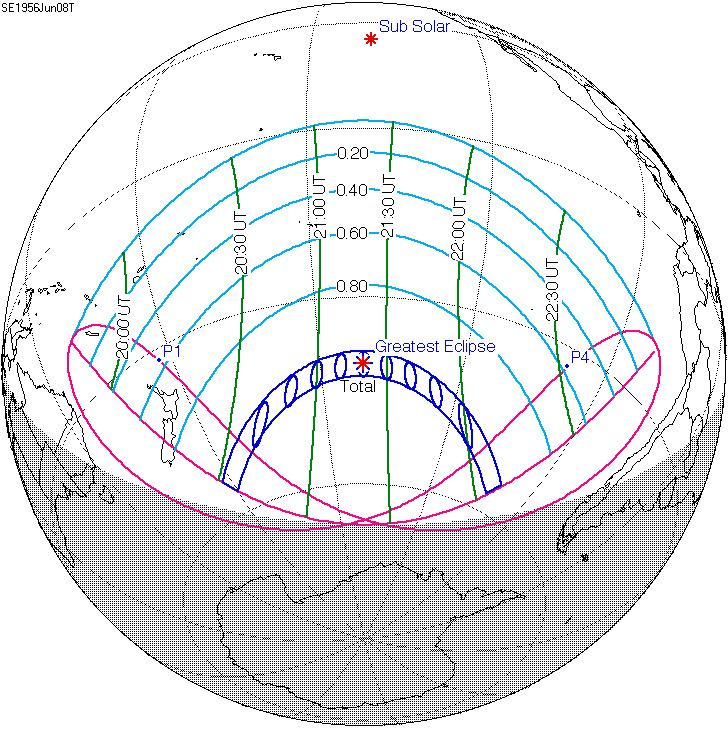Nature Total Magnitude 1.0581 Max. width of band 429 km (267 mi) | Gamma -0.8934 Duration 285 sec (4 m 45 s) Greatest eclipse 21:20:39 | |
 | ||
A total solar eclipse occurred on June 8–9, 1956. A solar eclipse occurs when the Moon passes between Earth and the Sun, thereby totally or partly obscuring the image of the Sun for a viewer on Earth. A total solar eclipse occurs when the Moon's apparent diameter is larger than the Sun's, blocking all direct sunlight, turning day into darkness. Totality occurs in a narrow path across Earth's surface, with the partial solar eclipse visible over a surrounding region thousands of kilometres wide. It began near sunrise over New Zealand on June 9th, and ended west of South America on June 8th.
Solar eclipses of 1953-1956
Each member in a semester series of solar eclipses repeats approximately every 177 days and 4 hours (a semester) at alternating nodes of the Moon's orbit.
Note: Partial solar eclipse of February 14, 1953 and August 9, 1953 belong to the last lunar year set.
